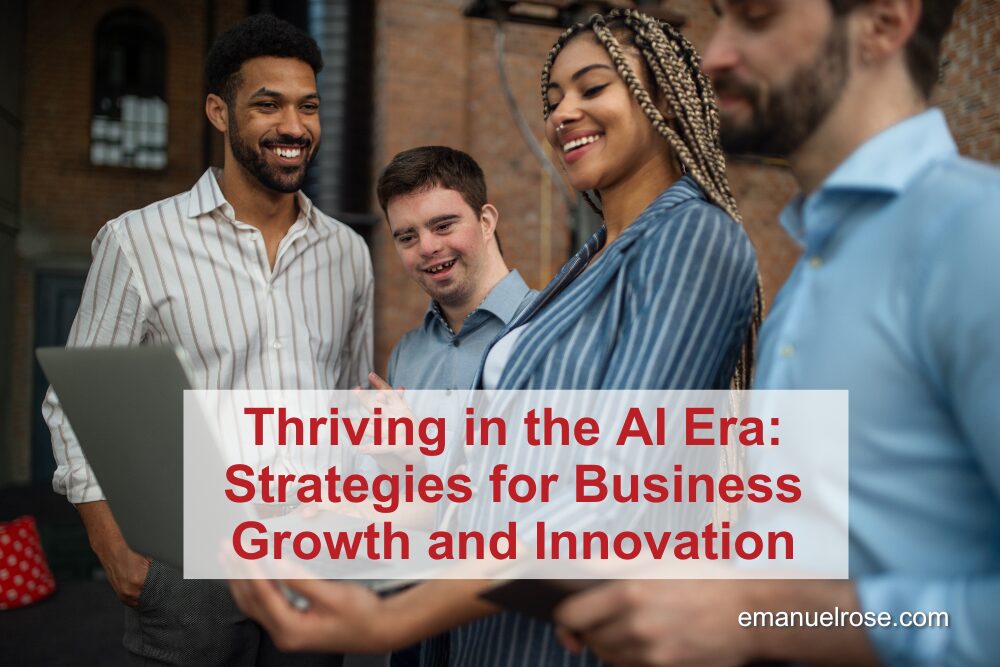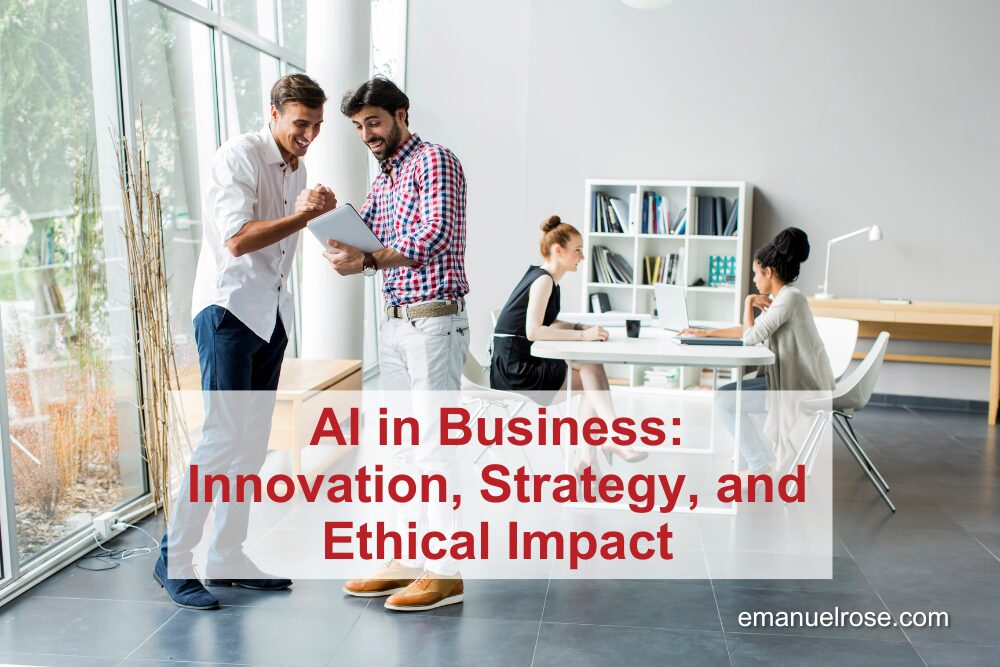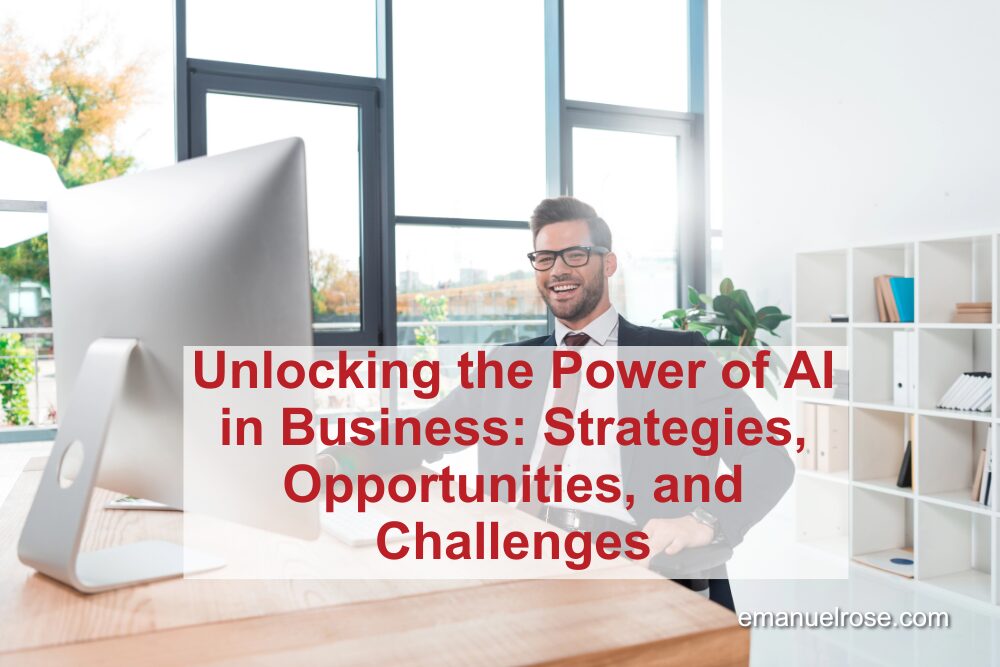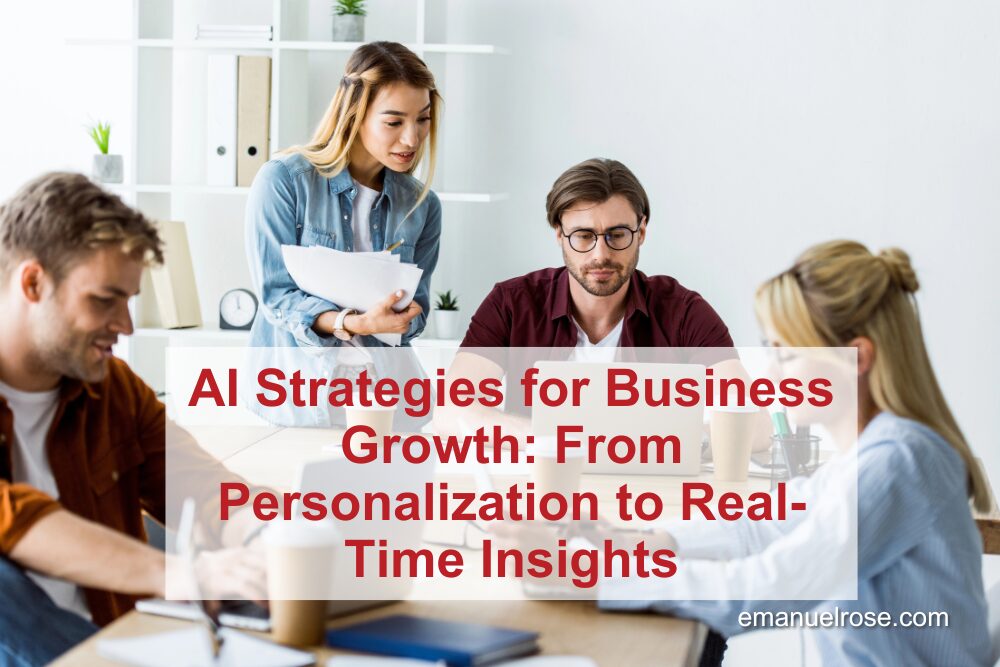Thriving in the AI Era: Strategies for Business Growth and Innovation
https://youtu.be/ylsnz_pnsp4 Companies must evolve with AI or risk falling behind. As artificial intelligence rapidly transforms industries, marketing is experiencing some of the most significant shifts. From emerging startups to well-established brands, adopting AI tools is no longer just an option—it’s a necessity for staying competitive and achieving lasting growth. The Mainstream Emergence of AI Once a niche technology, AI is now mainstream, infiltrating every aspect of business operations. A recent wave of AI advancements is democratizing access to powerful tools that were previously only available to large enterprises. However, despite AI’s prevalence, adoption rates remain surprisingly low. Statistics show that about 40% of business professionals have tried AI tools, with Gen X being the demographic least engaged in this technological shift. The Role of AI in Marketing AI’s impact on marketing is transformative. Businesses can now replace or enhance traditional search methods with AI-driven alternatives such as ChatGPT and Perplexity, enabling deeper engagement and real-time conversations with algorithms. This shift represents a significant paradigm change akin to the transition from dial-up internet to broadband. AI enhances marketing strategies by optimizing SEO processes, content creation, and customer engagement. Implementing AI with a Human Touch While AI automation offers remarkable potential, maintaining a human touch is crucial. An illustrative example is using AI in SEO, updating website content efficiently and accurately. AI can perform tasks such as title updates, meta descriptions, and internal linking, significantly reducing the time traditionally required for these activities. However, it’s not yet fully autonomous, necessitating human oversight to correct anomalies and ensure quality. Generative Engine Optimization (GEO) Generative Engine Optimization (GEO) is a relatively new concept for AI-enhanced marketing strategies that improve content generation and audience targeting. GEO, combined with traditional SEO, provides a powerful toolkit for marketers seeking to enhance their digital presence. AI-Driven Marketing Pillars To fully harness AI, businesses should focus on three key marketing pillars: content, authority, and trust. Tools like AI-powered listings engines automate business presence across platforms, while social media strategies and AI SEO integration strengthen brand visibility. Success requires commitment and effort—there’s no magic button for instant results, but consistent application of AI tools can significantly improve visibility and engagement. AI, Regulatory Challenges, and the Future The advancement of AI brings legal and ethical challenges, particularly around data privacy and deep fakes. Addressing these issues as AI’s capabilities expand requires strong regulatory frameworks and a commitment to ethical standards as its capabilities grow. Forward-thinking strategies are essential to mitigate potential risks in AI deployment. Organic Marketing in a Paid World In a domain dominated by paid campaigns, organic marketing strategies retain importance. Organizations leveraging organic methods such as video content and FAQs can establish authentic connections and address real customer needs. Personal touches and human elements remain pivotal in differentiating organic content from pre-packaged AI output. Achieving Results with AI Tools Introducing AI into business processes promises substantial benefits, especially for unoptimized domains. For instance, by enhancing local business profiles, AI can significantly increase visibility and customer engagement within the first few months of integration. Businesses benefit not just from AI’s efficiency but also from improved service delivery and customer satisfaction. Adapting to the AI Revolution The business world is undergoing a profound transformation driven by AI. For those willing to embrace change, there are limitless opportunities to innovate and excel. By imbuing AI strategies with human insight and effort, businesses can not only survive but thrive in this new era, harnessing AI’s full potential to drive success and growth. Staying informed, proactive, and ethically grounded is crucial as we approach a future replete with AI advancements. Businesses that adeptly navigate these changes will find themselves at the forefront of their industries, guiding their growth and defining success in the age of AI. We appreciate Robert Downey’s insights on AI’s role in business. As AI reshapes marketing, adapting to intelligent solutions is essential for staying competitive and driving growth. Watch the Marketing in the Age of AI Podcast Featuring Robert Downey: youtu.be/ylsnz_pnsp4
Thriving in the AI Era: Strategies for Business Growth and Innovation Read More »










